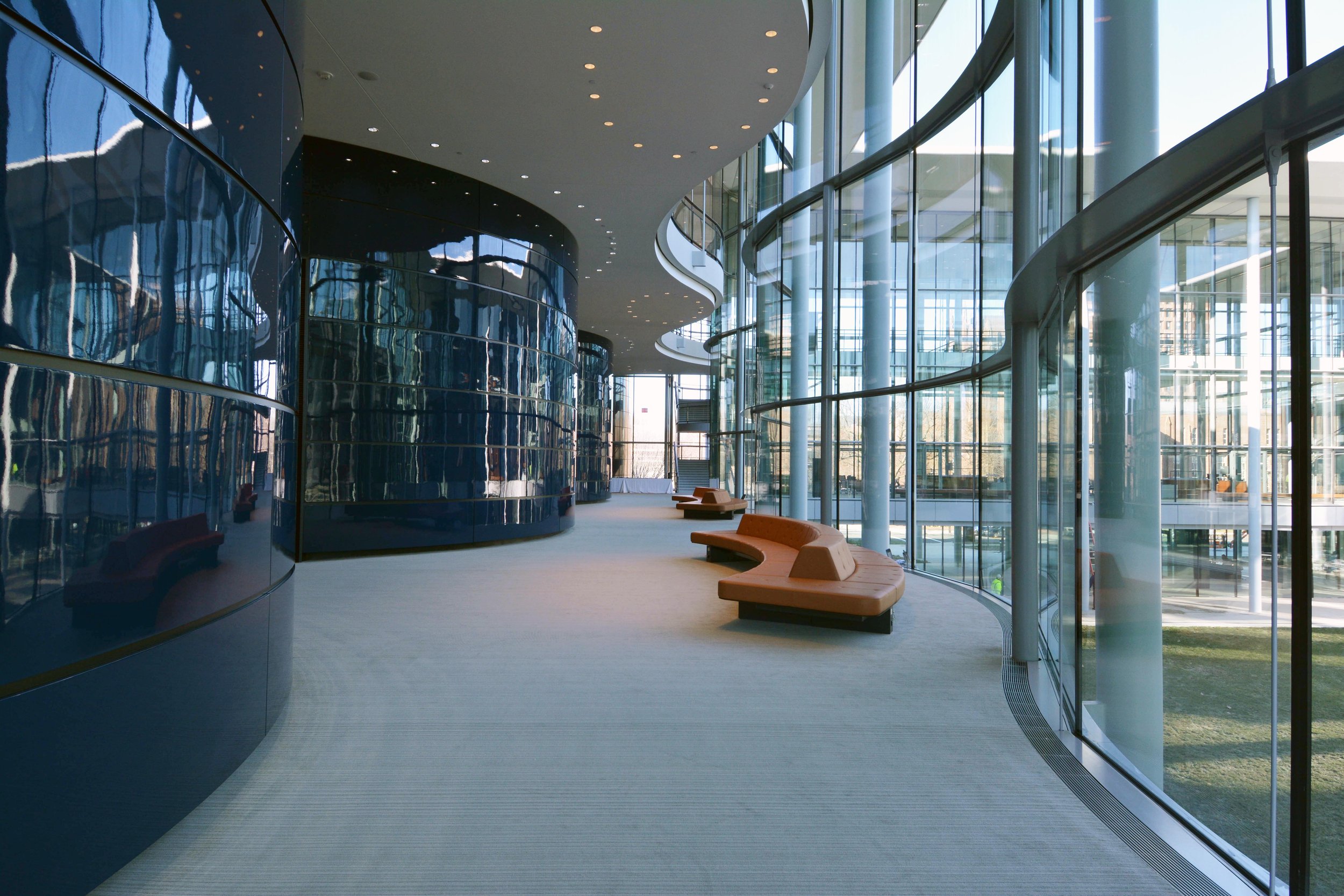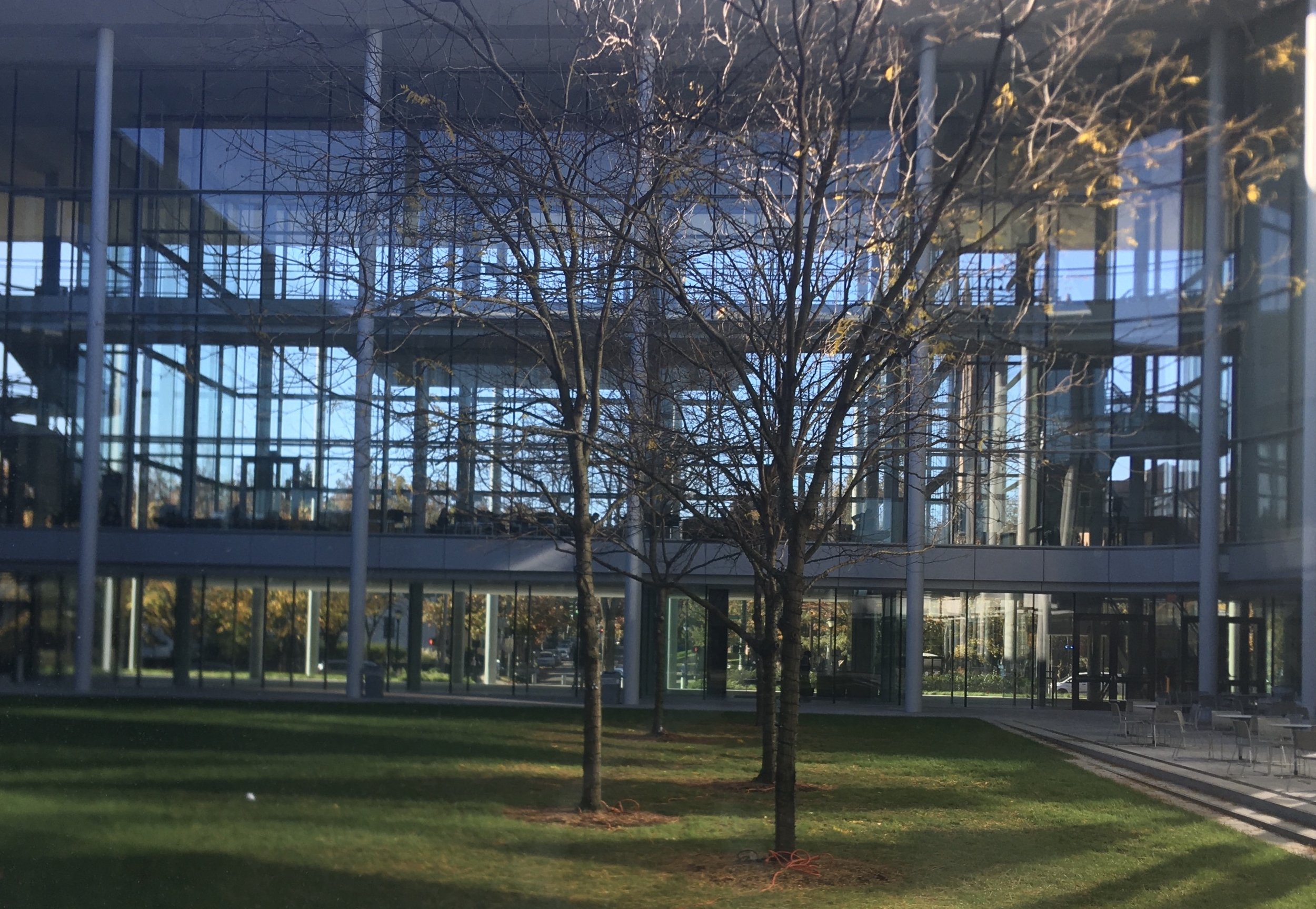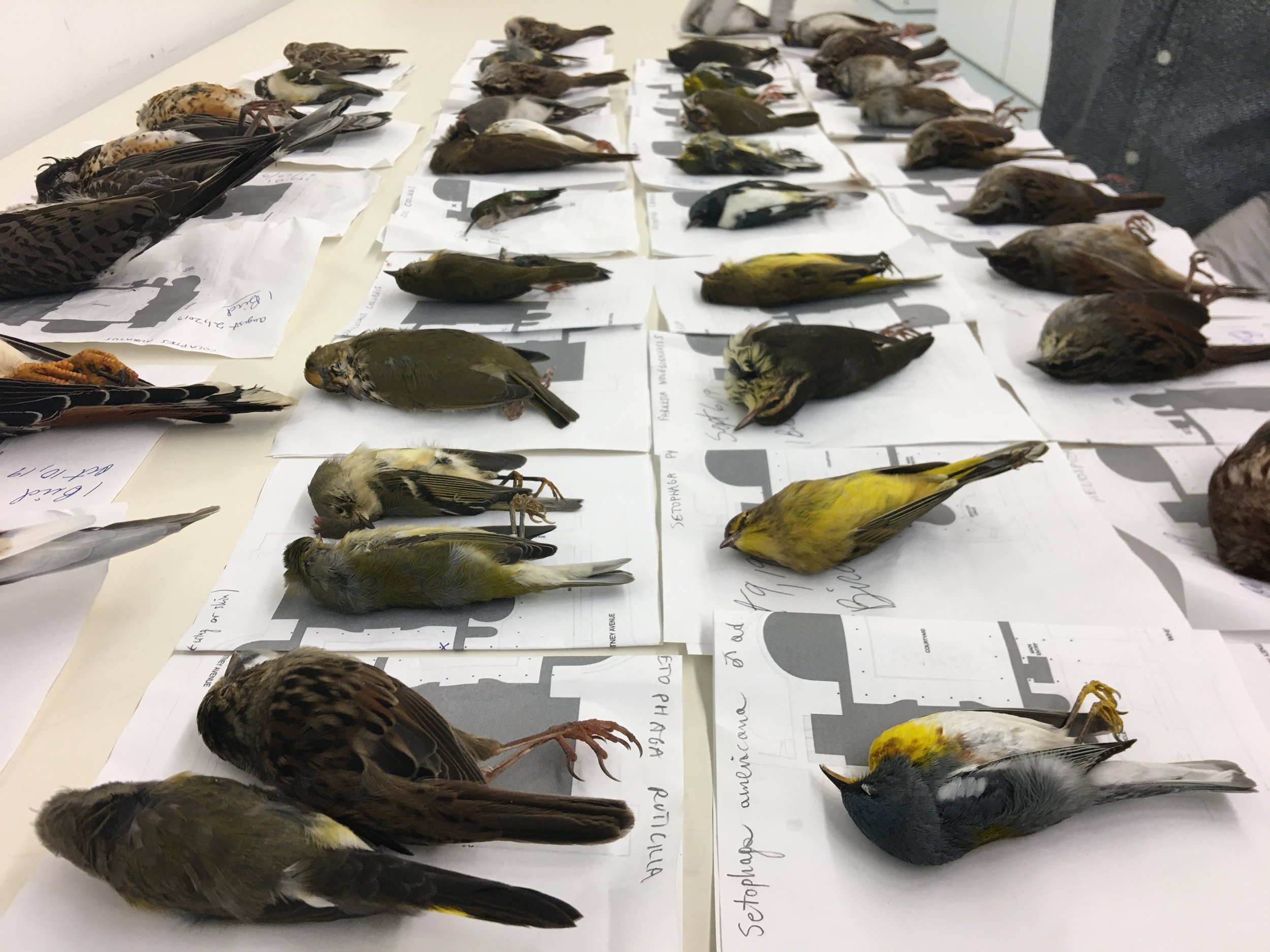
Case Study:
Yale School of Management’s Edward P. Evans Hall
In January 2014, the Yale School of Management opened a new 242,000-square-foot building, Edward P. Evans Hall, at 165 Whitney Avenue, New Haven, CT. Designed by Foster + Partners, the building features roughly 130,000 square feet of glass facades; an open-air courtyard with six honeylocust trees; and multiple design features linked to high frequencies of fatal bird collisions, such as transparent glass walkways and unobstructed reflective windows abutting bird habitat. Soon after it opened, the building quickly became an invisible killer for birds on Yale’s campus.
Starting in April 2018, a group of Yale faculty, staff, students, alumni, and citizen scientists began monitoring bird collisions at the building using a combination of informal carcass surveys, citizen science observations, and a data-collecting partnership between the building’s facilities staff and the Yale University Peabody Museum of Natural History.
From April 2018 to April 2022, at least 419 birds were killed and at least 19 birds were injured or stunned due to collisions with the building. These birds represent at least 56 species, including multiple species of conservation concern. Since the lifespan of commercial building is typically around 60 years, it is conservative to assume that this one building could kill many thousands of birds during its lifetime if no action is taken to retrofit the building.
The initial data from this research was shared in a 2020 report, “Why Yale’s Evans Hall is Deadly for Birds and What Can Be Done About It.” Today Evans Hall continues to cause bird window collisions at an alarming rate. No solution has been implemented at scale to reduce bird deaths. There are many attractive and proven effective retrofitting solutions that could mitigate these bird strikes if implemented. There are also many helpful examples of successful, large-scale retrofits of similar buildings at other universities and major institutions.
The open-air courtyard of Evans Hall is surrounded on four sides by glass facades, making it a deathtrap for birds.
The Yale Daily News has reported on community concern about bird-window strikes at Evans Hall regularly since 2016.
Transparent glass walkways can appear invisible to birds, leading to deaths and injuries.
The following charts share combined data on bird-window collisions at the building from iNaturalist citizen science observations, carcass surveys, the Yale Peabody Museum’s collection records, and the building’s facilities team.
How many birds are killed due to collisions with Evans Hall?
From April 2018 to April 2022, more than 435 birds were found dead or injured due to window collisions with the building. 416 of these birds were found dead and 19 birds were found injured or stunned. These birds represent at least 56 species, including multiple species of conservation concern.
The true death toll is surely significantly higher since most of the monitoring occurred informally and periodically. Some birds likely fly off and die elsewhere. Others are likely scavenged or thrown away before they are recorded.
What time of year do collisions with Evans Hall occur?
Consistent with other studies, higher strike rates were documented at Evans Hall during the spring and fall migration periods.
What types of birds are colliding with Evans Hall?
Imprints of mourning doves on the glass that caused their deaths.
Of the 56 recorded species, the majority were migratory songbirds. Mourning doves (39), white-throated sparrows (35), black-capped chickadees (25), house finches (20), and dark-eyed juncos (19) were the most frequent victims.
The killed birds included multiple species of conservation concern. For example, the building killed 14 northern parulas. Northern parulas are considered critically imperiled in Connecticut by NatureServe, meaning the species is at risk of local extinction. A rare Bicknell’s thrush, a species that is IUCN-listed as “vulnerable” and of highest conservation priority, was also killed. It was the first Bicknell’s thrush added to the Peabody’s collection since 1975. Another casualty, an American kestrel, is a species of special concern in the Connecticut Endangered Species Act. The population of American kestrels in this area has declined by an estimated 93 percent over the last 50 years. Other killed species of immediate conservation concern include common grackle, blackpoll warbler, and wood thrush.
Many species killed by the building that are not currently considered threatened are expected to become so in the decades ahead. Of the species recorded, at least 18 are expected to be highly vulnerable or moderately vulnerable for local extinction by 2050 due to climate change, according to Audubon.
Birds killed by Evans Hall in fall 2019 at the Yale Peabody Museum.
Evans Hall cover photo by Andrew Hurley, Yale University.





